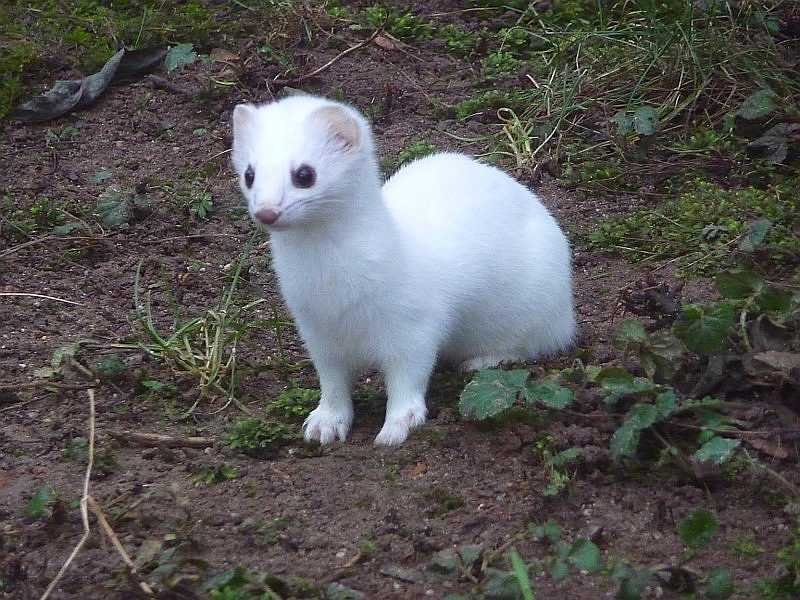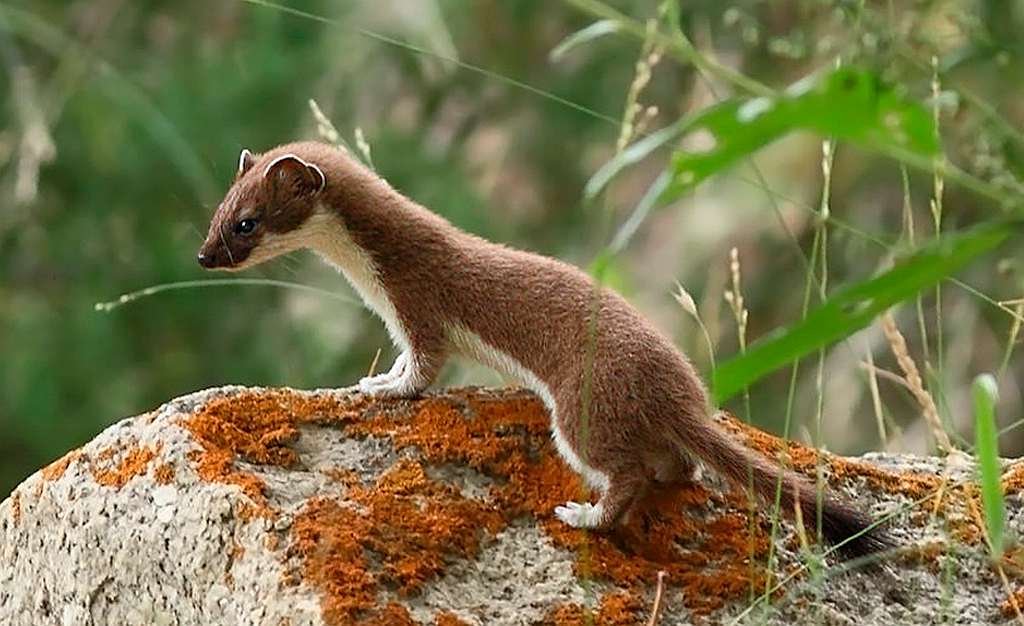The stoat (Mustela erminea), also known as the Eurasian ermine is a small carnivorous mammal belonging to the Mustelidae family. They are found throughout much of North America, Europe, and Asia, and they inhabit a variety of habitats including forests, grasslands, tundra, and wetlands.
Description
Stoats are small, slender animals with short legs and a long, thin body. They have a reddish-brown back and a white belly, and in winter their fur turns completely white except for the tip of their tail, which remains black. This color change is known as “ermining” and helps them blend in with their snowy surroundings.
Diet and habits
Stoats are opportunistic predators that will eat a wide variety of prey including small mammals, birds, eggs, and insects. They are able to catch prey larger than themselves by using their sharp teeth and agile movements. In fact, they are known for their lightning-fast reflexes and can be difficult for larger predators to catch.
Stoats are active and agile animals that are able to climb trees and swim well. They are also known for their ability to change their fur color from brown to white in response to seasonal changes. This adaptation helps them to remain camouflaged and avoid predators.
Despite their small size, stoats are fearless and highly territorial animals. They are known to defend their territory aggressively against other stoats and predators. They are also highly adaptable and can live in a wide range of habitats, from forests to urban areas.
The Stoat – Mustela erminea – Armiño in Spain
The Armiño is restricted to the north of the Iberian Peninsula (Spain and Portugal.) It looks very similar to the Stoat found in other parts of the world, with a reddish-brown back and a white belly, and also undergoes a seasonal color change where its fur turns completely white in the winter except for the tip of its tail, which remains black. However, the Armiño tends to be slightly smaller in size than other stoat species. (I presume that it will one day be classified as a subspecies?)

The Stoat – Mustela erminea – Armiño can be found in a variety of habitats including forests, grasslands, and mountains in the north of Spain and Portugal. They are primarily nocturnal and solitary animals, although they may sometimes hunt in pairs. They are opportunistic predators that will eat a wide variety of prey including small mammals, birds, eggs, and insects.
The Armiño has played an important role in Spanish culture for centuries. In traditional Spanish folklore, the Armiño is often associated with royalty and nobility, and its fur has been used to make ceremonial garments and other luxurious items. Today, the Armiño is a protected species in Spain, and its populations are generally stable.
Ronda Today
Everything you need to know before you visit Ronda “The city of dreams” in Andalucia. https://www.rondatoday.com/
Wildside Holidays – Spain
Take a trip on the Wildside! Discover the wildlife and nature of Spain, its Natural and National Parks and find the top wildlife, activity and walking holiday companies.
Iberia Nature Forum
Struggling with identifying those bugs and beasties? Why not check out the Iberia nature Forum!
Discover the Iberia Nature Forum – Environment, geography, nature, landscape, climate, culture, history, rural tourism and travel.
I’ve been living in this lovely area of Western Andalucia for the last 20 years or so and dedicate most of my time to the running of English language tourist information websites for the towns of Cádiz, Ronda, Grazalema, the famous or infamous Caminito del Rey, and also Wildside Holidays, which promotes sustainable and eco-friendly businesses running wildlife and walking holidays in Spain. My articles contain affiliate links that will help you reserve a hotel, bus, train or activity in the area. You don’t pay more, but by using them you do support this website. Thankyou!
